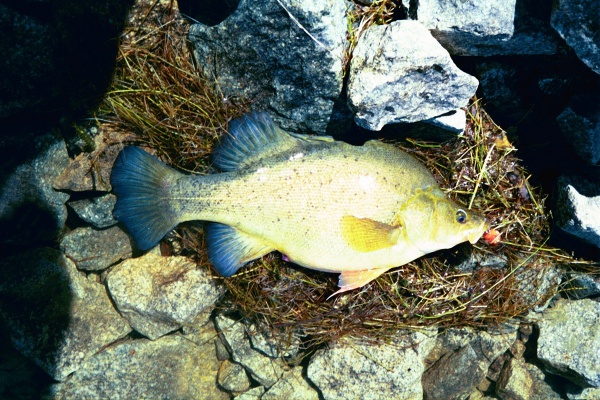Facts About Golden perch
The golden perch, commonly known as "goldens" "yellowbelly" or "callop" is a medium-sized freshwater fish native to Australia. It predominantly inhabits the Murray-Darling River system. Despite its name, the golden perch is not a true perch; it belongs to the Percichthyidae family. This species holds significant appeal for anglers in Australia.
Golden perch vary in size and shape depending on their habitat. They exhibit distinctive features, including deep, laterally compressed bodies, a sizable mouth, and a noticeable "hump" above their head. Their coloration can range from pale silvery-gold to deep yellow/gold or even bronze-black.
Scientifically designated as Macquaria ambigua, golden perch are found in various Australian river systems. Over time, isolation, genetic drift, and natural selection have contributed to the development of subspecies, or perhaps even distinct species, within this group.
Golden perch have adaptable breeding strategies and require specific conditions to spawn. Female golden perch are highly fecund, producing a substantial number of eggs. These fish are known for their extensive migrations, particularly before spawning, and can tolerate a wide range of temperatures and salinity levels.
As adults, golden perch are carnivorous, preying on smaller fish and macrocrustaceans. They are a favorite among anglers, who catch them using various baits and lures throughout their range.
Regrettably, wild populations of golden perch have experienced a significant decline due to factors such as dams, weirs, and habitat degradation. In some regions, they are listed as "Vulnerable" for management purposes. Weirs, in particular, pose a major threat to the species, raising concerns about the genetic diversity of hatchery-bred populations.
